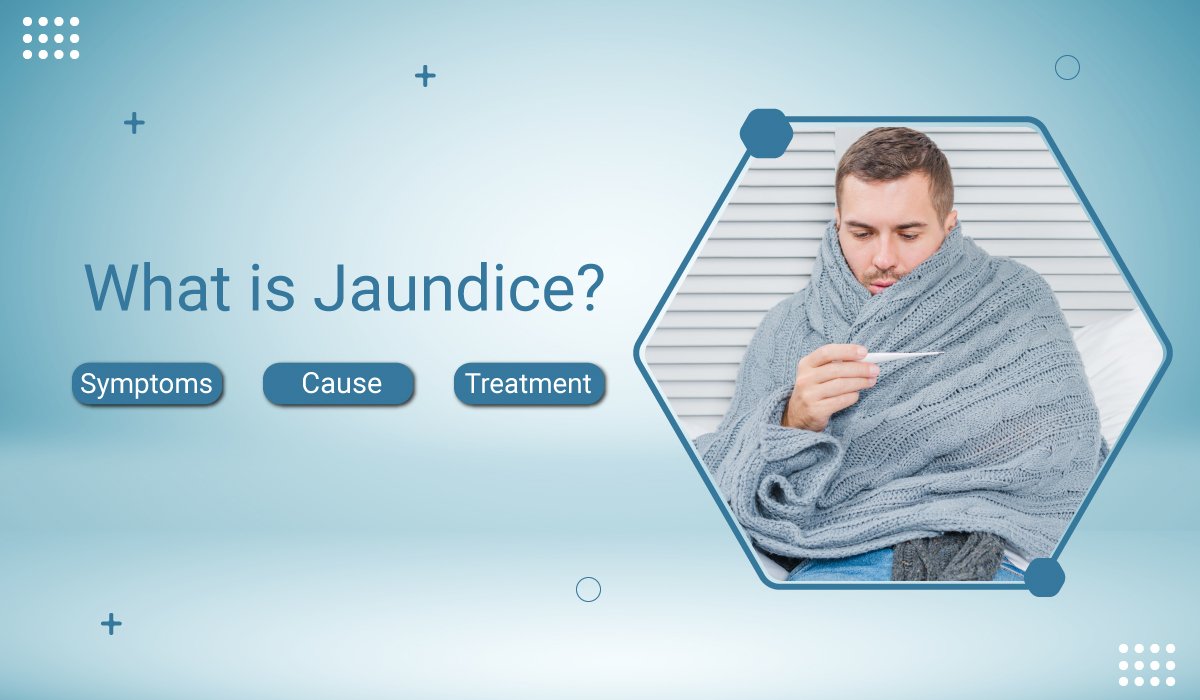What is Jaundice? Symptoms, Causes and Treatment

Jaundice can be identified in the patient by the unusual yellowish colour of their skin and eyes. One can ask why yellow? Why not red? We have already answered by stating that bile-related disorders cause this symptom and the bile is yellow in colour. In a patient with this symptom, it is either the bile is being produced superabundantly or the body has become incapable to remove the bile from the system.
Most often, we can see this symptom occur in infants. However, in such cases liver related disorders do not cause jaundice. Rather, it is caused by the breaking down of fetal RBCs, as they differ from the adult ones, which causes the release of bilirubin, a bile pigment. It is difficult for newborns to get rid of this excess bile as they don’t have developed systems and enzymes for the break of this pigment.
Before moving to the treatment and diagnosis, let us understand the causes and attributes of this condition in more detail.
What is bilirubin and what does it do?
The liver plays a central role in the metabolism of the body. Every instant, this organ acts as the factory of bio-molecules in the form of nutrients and their buying products. The raw materials are delivered to the liver through blood. One of the key functions of this natural factory is to process the waste cells and bioproducts in order to break them down into forms which can be removed from the body. This processing comes at a cost of the production of the pigment bilirubin which is a part of bile. This yellow-green coloured bile is produced when excess fatty acids combine with bilirubin and other salts. The bile duct acts as a channel between the liver and gallbladder through which bilirubin passes. The gallbladder is the storehouse of this pigment which secretes this pigment into the intestines in a very controlled way for it to break down the partially digested food and then to get released as the stool passes.
What can cause jaundice? Are there only Liver related causes?
The removal of this pigment is a very essential process to prevent the body from accumulating of bilirubin and usually, this process can be hindered due to the following abnormalities:
- Like in infants, very fast degradation of RBCs can secrete an excess amount of bilirubin into the stream of blood causing the symptoms of jaundice to occur.
- Liver-related conditions like cirrhosis can weaken the liver to the point where it becomes unable to produce bile. This is due to these types of liver conditions bilirubin does not combine with the other components of bile. Because of this, the pigment starts to accumulate leading to cause jaundice
- Defects in the passage ducts of bilirubin can cause it to flow back into the liver leading to this condition
Some diseases that cause rapid RBCs degradation
- The most common disease that can cause this is Haemolytic anaemia which is usually caused due to genetic disorders like sickle cell anaemia.
- RBCs are also destroyed rapidly in infants who carry red blood cells which are different from adults.
- Parasite infections like dengue or malaria can cause the platelets and RBCs to get destroyed very fast
What diseases can harm the liver?
- Unconjugated hyperbilirubinemia is a genetic disease which reduces the catabolism of bilirubin by the liver. This condition is induced by stimuli such as anxiety or infection
- Cirrhosis by the consumption of huge amounts of alcohol
- Types of Hepatitis such as:
- A,B,C,D,E
- Drug related hepatitis
- Genetic hepatitis caused by autoimmune disease
What in the world causes the blockage of bile ducts?
This type of hindrance in the passage of bile can be caused due to some conditions such as stones in the gallbladder, benign cancers in the liver or pancreas, and genetic disorders that cause inflammation in the ducts.
How do doctors diagnose jaundice?
Jaundice diagnosis is a task which mostly involves an understanding of the patient’s symptoms from an examination and also the possible causes of jaundice. The doctor must also have an idea about the family medical history of the patient. The physical examination of patients includes checking the colouration of the eyes and asking them about the urine colour. Other than this, you will also be asked to provide a blood sample for examination in order to rule out any viral infections and the bilirubin levels in the bloodstream. This blood test also gives an idea about the function of the liver. The dogmatic aim of the diagnosis of jaundice is to rule out the cause of this symptom in order to provide the most suitable treatment for it.
Treating the cause of jaundice
There are many causes of jaundice which are treatable or which get resolved on their own. Some examples of these kinds of causes are Hepatitis A infection, malaria, rapid RBC degradation in infants etc. However, in cases like the damage of the liver, jaundice becomes a chronic or recurring symptom as these causes are not treatable.
Conclusion
One may ask about the complication related to jaundice. They must know that jaundice as a symptom does not hurt anyone unless the accumulation of bilirubin becomes too high in the bloodstream. However, this symptom can indicate a serious and possibly treatable cause. You should never delay seeking medical attention as almost all the causes, except the ones which get treated on their own, are progressive in nature. So, the bottom line is to get in touch with Dr. Vatsal Mehta gastroenterologist expert as soon as you suspect of having this symptom.
